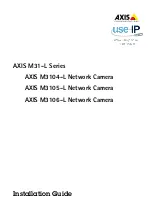
Transition Networks
S4224 Web User Guide
33558 Rev. C
Page 434 of 669
Last Supplicant/Client Info
This field provides information about the last supplicant / client that attempted to authenticate (for the
administrative states of Port-based 802.1X, Single 802.1X, Multi 802.1X, and MAC-based Auth.) as
described in the table below.
Table 3. Last Supplicant/Client Information
Last Supplicant/Client Info
Name
IEEE Name
Description
MAC
Address
dot1xAuthLastEapolFrameSource The MAC address of the last supplicant/client.
VLAN ID
- - -
The VLAN ID on which the last frame from the last
supplicant/client was received.
Version
dot1xAuthLastEapolFrameVersion
802.1X-based
: The protocol version number carried in the most
recently received EAPOL frame.
MAC-based
: Not applicable.
Identity
- - -
802.1X-based
: The user name (supplicant identity) carried in the
most recently received Response Identity EAPOL frame.
MAC-based
: Not applicable.
Selected Counters
Selected Counters
The Selected Counters table is visible when the port is in one of these administrative states:
•
Multi 802.1X
•
MAC-based Auth.
The table is identical to and is placed next to the Port Counters table, and will be empty if no MAC
address is currently selected. To populate the table, select one of the attached MAC Addresses from
the table below.
Attached MAC Addresses
Identity
Shows the identity of the supplicant, as received in the Response Identity EAPOL frame.
Clicking the link causes the supplicant's EAPOL and Backend Server counters to be shown in the
Selected Counters table. If no supplicants are attached, it displays
No supplicants attached
.
This column is not available for MAC-based Auth.
MAC Address
For Multi 802.1X, this column holds the MAC address of the attached supplicant.
For MAC-based Auth., this column holds the MAC address of the attached client.
Clicking the link causes the client's Backend Server counters to be shown in the Selected Counters
table.
If no clients are attached, it displays
No clients attached
.
VLAN ID
The VLAN ID that the corresponding client is currently secured through the Port Security module.
State
The client can either be authenticated or unauthenticated. In the authenticated state, it is allowed to
forward frames on the port, and in the unauthenticated state, it is blocked. As long as the backend
















































